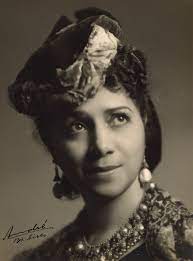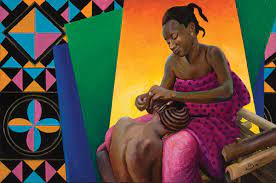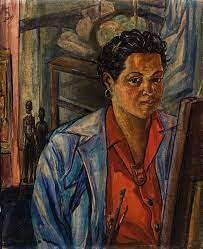We always hear this phrase “Beauty is in the eye of the beholder.” The phrase refers to how certain people will think something is beautiful or not and that opinion can differ from person to person. I find this idea is particularly interesting when looking at paintings of people and other forms of portraiture.
As I’ve been researching Lillian Evanti and her life, I have come across some beautiful photographs of her like this:
She has many photographs of her in costume for the roles she has performed and there are a few presumably candid ones like this:
As someone who has a small amount of background in photography, one thing we are constantly asked about is staging of photographs and what we think the photographer had in mind when they took said picture. Every portrait of this amazingly talented woman is beautiful, but I personally don’t feel like her artistry truly comes across as much as it could. As I was scrolling through the internet to try and find more sources about this woman, I came across this painting:
This is a painting of Lillian Evanti in the main female lead, Rosina, in Barber of Seville. This was the role she had before she took on Violetta in La Triviata. When I first came across this painting, I couldn’t believe it was her. This work of art looks like it could be of a renaissance woman or someone from decades before Evanti was alive. When I learned who was the subject, I was instantly intrigued who painted it and the answer surprised me.
This is one of the most well known portraits from the Lois Mailou Jones, a Black female painter (1905-1998) who was very active during the Harlem Renaissance. This is what some of her other work looks like:
Lois led a very interesting career. She was active in both America and France and held her first solo exhibition when she was 18. She was a very accomplished painter, focusing mostly on portraying other people of color, specifically Black people in the Harlem renaissance.
I can’t find any confirmation of when the painting of Evanti was done (there is no date for the painting that I could find), but it was likely when both the women were in Europe in the 1930s. I find her depiction of Evanti to be ethereal – she doesn’t look like a real person and yet she was. Here is where we get into beauty being in the eye of the beholder.
At the time this work was done, America in particular was not very friendly (putting it mildly) to anyone that was not white. I think if a white painter had tried to paint the same scene, the painting wouldn’t look as much like a work of art as it does here. Here is what Lois had to say about the painting:
“A very unusual thing happened while I was doing the finishing touches. The Barber of Seville, the opera, came on over the radio. Of course, when the music came on, Lillian began to sing. There was the sparkle in her eyes and the gestures and everything. It was just what I needed to finish the portrait. I caught the spirit of her, which was just marvelous.”
I feel like the simple existence of Evanti in this painting would be overshadowed by her Blackness if anyone besides a Black painter made this work of art. Because of Lois, Evanti was allowed to exist both as a person and a character in this painting and nothing feels forced. Her nature as a singer, the sparkle in her eye as Lois said, is easy to see in the painting.
So often in art we feel like we have to pick something to focus on about an artist – their race, their gender, what they do, how they do it, when they do it, etc. Highlighting what makes certain artists stand out from their colleagues is important, but can we let their artistry be outside that categorization as a way to highlight what an amazing creator that artist is? Lillian Evanti’s poise and power are also easy to see in the painting, and depending on the lens of who is looking at her, they might’ve chosen her Blackness to focus on over the beauty, grace, and talent she brought to the world of opera.
Works Cited:
https://www.whitehousehistory.org/lillian-evanti






